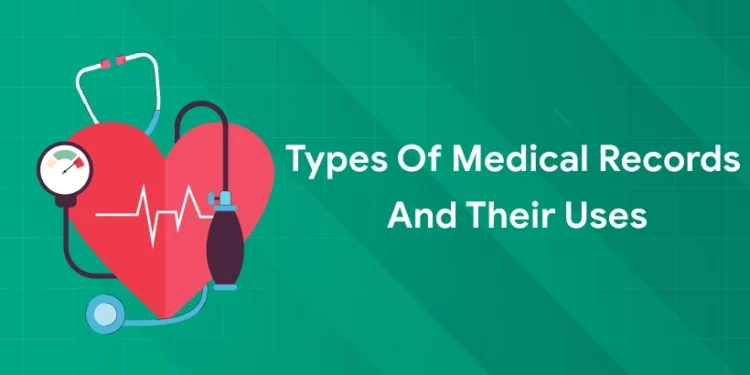Table of Contents
Key Takeaways:
- Medical records are the foundation of safe, effective healthcare, capturing every aspect of a patient’s health journey.
- EHRs, EMRs, PHRs, POMRs, source-oriented, and integrated records each serve distinct purposes in healthcare.
- Core components include patient demographics, medical history, medication lists, treatment records, diagnostic reports, progress notes, nursing notes, discharge summaries, and consent forms.
- Accurate records improve patient safety, support regulatory compliance, and enhance care coordination.
- Structured training programs like Entri’s Hospital Administration Course equip you with the skills to manage and optimize medical records in modern healthcare settings.
Introduction
Medical records are the backbone of healthcare, capturing every detail of a patient’s journey—from diagnosis to treatment and follow-up. These records are not just stacks of paper or digital files; they are living documents that empower clinicians, support patient safety, and ensure regulatory compliance. As healthcare becomes more digital and interconnected, understanding the types of medical records and their uses is essential for both professionals and patients.
What is The Role of Medical Records in Modern Healthcare?
1: What is the primary role of a hospital administrator?
Medical records serve as the central repository of all health-related information about a patient. They document diagnoses, treatments, medications, allergies, test results, and more, providing a comprehensive view of the patient’s health history. Accurate records help clinicians make informed decisions, prevent errors, and coordinate care across specialties and institutions. They also support legal, regulatory, and insurance requirements, ensuring that every aspect of patient care is documented and traceable.
You might also like: What is the Medical Records Department in a Hospital?
Hospital Administration Course with Assured Career Growth
Hospital Administration Course by Entri App: Master essential healthcare management skills, gain certification, and secure top roles in leading hospitals
Join Now!What Are the Different Types of Medical Records?
-
Electronic Health Records (EHRs)
Electronic Health Records (EHRs) are digital versions of a patient’s chart, maintained by healthcare providers. EHRs typically include medical history, medications, test results, progress notes, and treatment plans. Unlike traditional paper records, EHRs are designed to be shared across multiple healthcare organizations, allowing seamless information exchange between providers. This interoperability improves care coordination, reduces duplication of tests, and supports public health initiatives. EHRs also enable patients to access their own health information, promoting greater engagement and self-management.
-
Electronic Medical Records (EMRs)
Electronic Medical Records (EMRs) are the digital equivalent of the paper charts used within a single clinic or hospital. EMRs contain notes and information collected by and for the clinicians in that facility, such as visit summaries, lab results, and treatment plans. While EMRs are not designed for sharing outside the institution, they allow providers to track patient data over time, identify patients for preventive visits, and improve the quality of care. EMRs are essential for internal reporting, quality improvement, and regulatory compliance.
Read in detail: What are Electronic Medical Records?
-
Personal Health Records (PHRs)
Personal Health Records (PHRs) are maintained by patients themselves, often through apps or online portals. PHRs can include diagnoses, medications, immunizations, family medical histories, and provider contact information. Patients use PHRs to manage their health information, track chronic conditions, and share key documents with new doctors. PHRs empower patients to take an active role in their healthcare, ensuring that important information is always accessible.
-
Problem-Oriented Medical Records (POMRs)
Problem-Oriented Medical Records (POMRs) focus on the patient’s specific health problems, with a list of problems and corresponding progress notes. This method ensures easy tracking of treatment courses for each problem, making it easier for clinicians to monitor progress and adjust care plans. POMRs are particularly useful in teaching hospitals and complex cases, where multiple issues need to be managed simultaneously.
-
Source-Oriented and Integrated Medical Records
Source-Oriented Medical Records are organized by the source of information, such as physician, nursing, or laboratory notes. This format allows for easy reference to specific provider notes but may lack integration across departments. Integrated Medical Records, on the other hand, combine all entries from all departments in strict chronological order. This format provides a comprehensive overview of the patient’s journey, useful for medico-legal reviews and continuity of care.
-
Clinical Documentation and Diagnostic Records
Clinical documentation includes detailed records of patient encounters, such as history and physical examinations, progress notes, and consultation reports. Diagnostic records encompass laboratory and pathology reports, radiology and imaging records, and other test results. These documents provide the evidence needed for accurate diagnosis, treatment planning, and monitoring of disease progression.
-
Treatment and Procedure Notes
Treatment and procedure notes document the specifics of medical interventions, including surgeries, therapies, and rehabilitation. These records include the diagnosis, procedure details, anesthesia used, medical team involved, and any complications or variances from standard procedures. Treatment notes are crucial for quality assurance, medico-legal protection, and continuity of care.
-
Administrative and Financial Files
Administrative and financial files include discharge summaries, billing and charge sheets, and consent forms. Discharge summaries capture the final diagnoses, treatment outcomes, and follow-up instructions, ensuring that subsequent providers have the necessary information. Billing and charge sheets provide itemized records of provider and facility fees, supporting insurance claims and regulatory compliance. Consent forms document patient authorizations for procedures, treatments, and advance directives.
You might also like: Duties and Responsibilities of a Medical Records Manager
What are the Core Content Types in Medical Records?
Medical records typically include several core components, each serving a specific purpose:
| Component | Description |
|---|---|
| Patient Demographics | Name, address, contact information, age, gender, and emergency contacts |
| Medical History | Past illnesses, surgeries, allergies, family history, and immunizations |
| Medication List | Current and past medications, dosages, and administration schedules |
| Treatment Records | Details of procedures, surgeries, therapies, and interventions |
| Diagnostic Reports | Lab results, imaging reports, and pathology findings |
| Progress Notes | Daily updates on patient status and response to treatment |
| Nursing Notes | Documentation of nursing assessments, interventions, and evaluations |
| Discharge Summaries | Final diagnoses, treatment outcomes, and follow-up instructions |
| Consent Forms | Legal authorizations for procedures, treatments, and advance directives |
Also read: What is a Hospital Information System?
The Importance of Medical Records in Patient Safety
Medical records play a vital role in ensuring patient safety throughout every stage of healthcare. Here’s how they make a difference:
- Prevents Medical Errors: Accurate records help avoid mistakes such as giving a patient medication they are allergic to or repeating unnecessary tests. This reduces the risk of harm and improves treatment outcomes.
- Supports Continuity of Care: Complete medical records allow all healthcare providers involved in a patient’s care to access their full history, ensuring that decisions are informed and coordinated, especially when patients see multiple specialists.
- Reduces Duplication: Well-documented records prevent the repetition of diagnostic tests or treatments, saving time and resources while minimizing patient discomfort.
- Improves Communication: Medical records serve as a reliable channel for communication between doctors, nurses, and other healthcare professionals, ensuring everyone is on the same page regarding the patient’s condition and care plan.
- Enables Early Intervention: By tracking changes in a patient’s health over time, records help identify warning signs and risk factors early, allowing for timely interventions and better management of chronic conditions.
- Legal and Regulatory Protection: Detailed records provide evidence of the care provided, protecting both patients and providers in the event of legal disputes or audits. They also help healthcare organizations meet regulatory requirements and quality standards.
- Enhances Quality Improvement: Reviewing medical records helps hospitals and clinics identify patterns of adverse events, implement corrective actions, and continuously improve the safety and quality of care delivered.
- Empowers Patients: When patients have access to their own records, they become more involved in their care, can better understand their health, and can ask more informed questions during consultations.
In summary, medical records are much more than administrative paperwork—they are essential tools that help protect patients, prevent errors, and ensure high-quality, coordinated care.
Also read: EMR vs EHR vs HMS
Hospital Administration Course with Assured Career Growth
Hospital Administration Course by Entri App: Master essential healthcare management skills, gain certification, and secure top roles in leading hospitals
Join Now!How Entri’s Hospital Administration Course Helps You Master Medical Records
Entri’s Hospital Administration Course in Kerala is designed to train future administrators in core hospital operations, including medical records management, health-information flow, and documentation standards. The curriculum covers key departments, hospital workflows, medical terminology, records and insurance fundamentals, NABH-aligned quality management, and healthcare IT. This comprehensive training prepares you to manage, secure, and leverage medical records for better hospital performance and patient outcomes.
Conclusion
Medical records are more than just documentation—they are the lifeline of modern healthcare. By understanding the different types of medical records and their uses, healthcare professionals and patients alike can ensure that care is safe, efficient, and patient-centered. Whether you are a clinician, administrator, or patient, the knowledge and skills gained from programs like Entri’s Hospital Administration Course can help you navigate the complexities of medical records and contribute to better health outcomes for all.
Hospital Administration Course with Assured Career Growth
Hospital Administration Course by Entri App: Master essential healthcare management skills, gain certification, and secure top roles in leading hospitals
Join Now!Frequently Asked Questions
What is the difference between an EMR and an EHR?
An Electronic Medical Record (EMR) is a digital version of a patient’s chart used within a single healthcare facility. An Electronic Health Record (EHR) is designed to be shared across multiple providers and organizations, giving a more comprehensive, lifetime view of the patient’s health.
Who owns the medical records?
Medical records are typically owned by the hospital or healthcare provider, but patients have the legal right to access and request copies of their own records. Hospitals are responsible for maintaining and securing these records.
How long should medical records be kept?
Retention periods vary, but most hospitals keep adult records for at least 3 years after the last visit and pediatric records for several years after the child reaches adulthood. Special cases (like medico-legal records) may need to be preserved longer.
Can patients correct or edit their medical records?
Patients cannot directly alter clinical notes, but they can request corrections or add clarifying statements if they find errors. The provider then reviews and documents any changes.
How are medical records kept secure?
Medical records are protected by strict confidentiality policies, access controls, and security measures. Only authorized personnel can view or modify records, and hospitals must safeguard both paper and electronic files against loss, damage, or unauthorized access.
Why are medical records important for patient safety?
Accurate records help prevent medical errors, reduce unnecessary tests, and ensure continuity of care. They also provide legal protection and support quality improvement initiatives.
Can medical records be shared with other doctors or hospitals?
Yes, with patient consent, medical records can be shared with other healthcare providers to ensure coordinated and safe care. Sharing is especially important during referrals or emergencies.
What should I do if I want a copy of my medical records?
Patients can request copies of their records from their healthcare provider. Hospitals usually require a formal application and may charge a small fee for processing and copying.















